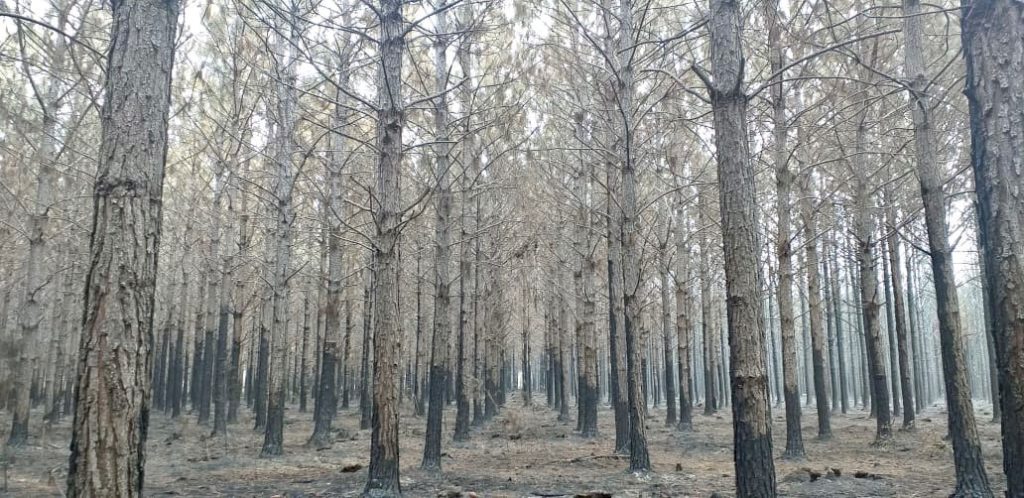After the forest fire registered on 25/08/20, we have started to evacuate the slash on cutting, twigs and dead wood. It’s key to perform this operation after a fire otherwise you significantly increase the fire danger for the following year’s by leaving the dismantled crowns on the ground forming a thin layer of fine dry fuel.

Furthermore, trees weakened by fire may also be subject to bark beetle attacks causing additional mortality. These attacks can even be extended to neighboring trees that were not affected by the fire and cause further mortalities.

We estimate that over 50% of our tree plantations, compound of eucalyptus and pines trees, were affected in various stages. Trees planted after 2008 have been totally affected and the oldest one have only be partially affected.


Pine trees plantations, which account for 77% of the affected area, were the most resilient to flame as their thick bark does not catch fire or burn easily. It also protects the inside of the trunk, the living tissues that transport water and nutrients, from heat damage. Pine trees drop lower branches as they age, preventing fire from spreading to tree tops. Fire can destroy the cambium (tissue between wood and bark that actually grows to form wood in trees) on part of the trunk surface without necessarily killing the tree. The consequences for the tree are then proportional to the height of the charred trunk.

The good news is that our forest advisor has identified some signs of natural regrowth: Eucalyptus and pine trees have both a strong regeneration capacity. You can see some cuts of pine trees partially affected which have been sold to a wood products manufacturer.


